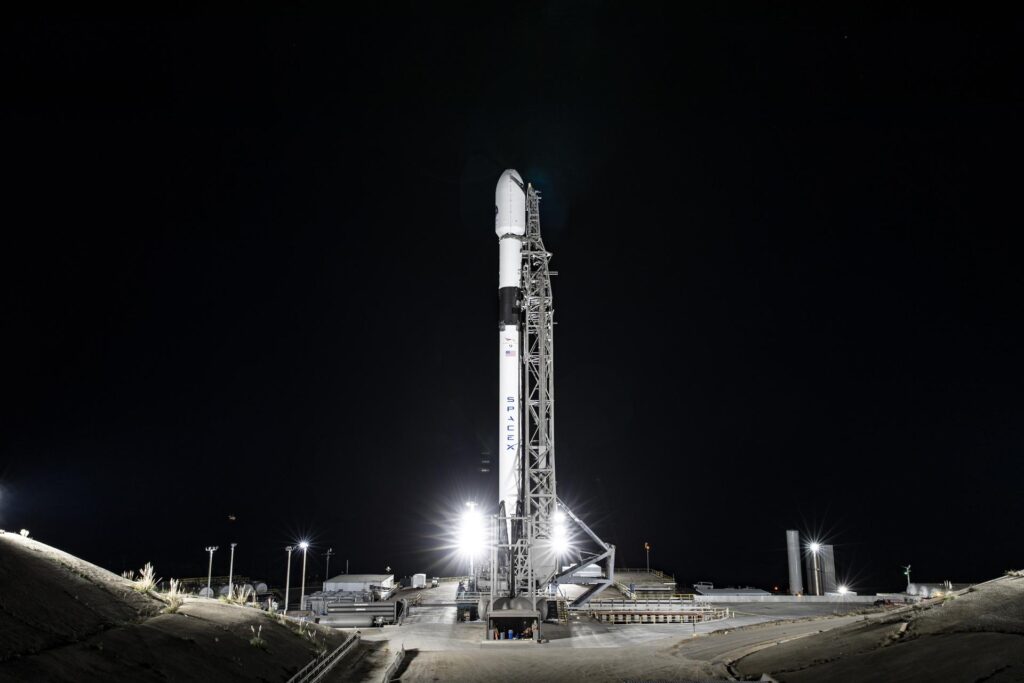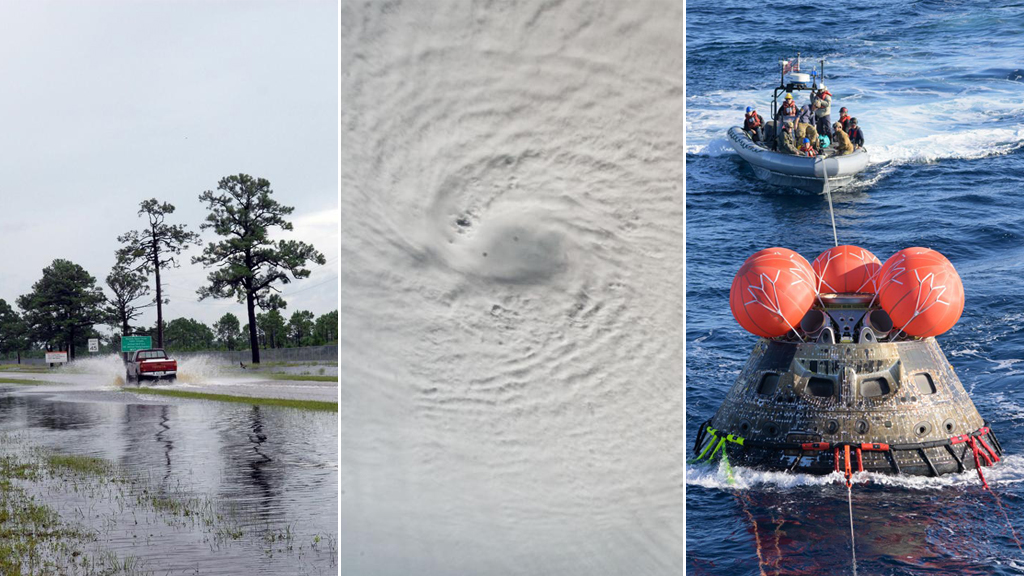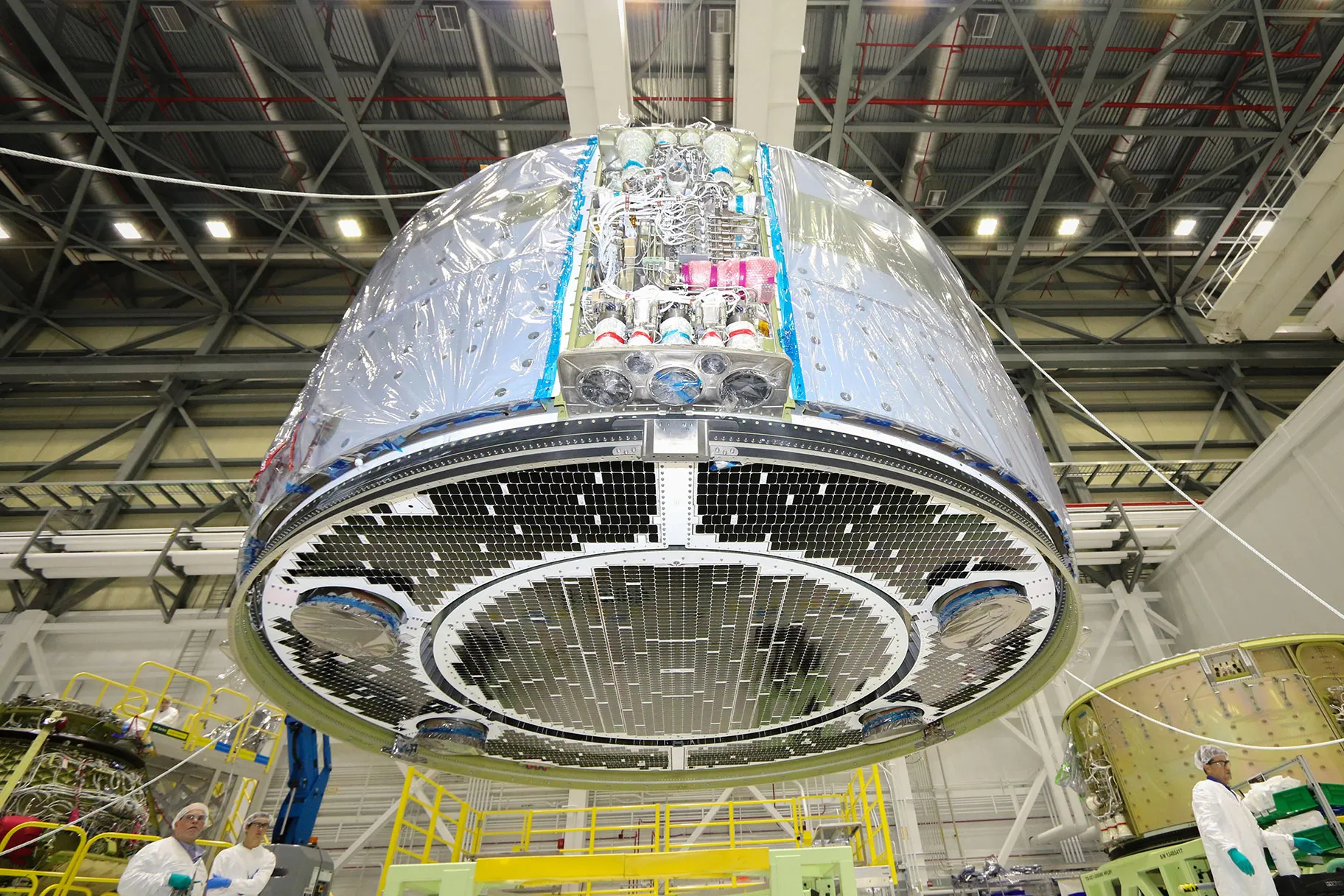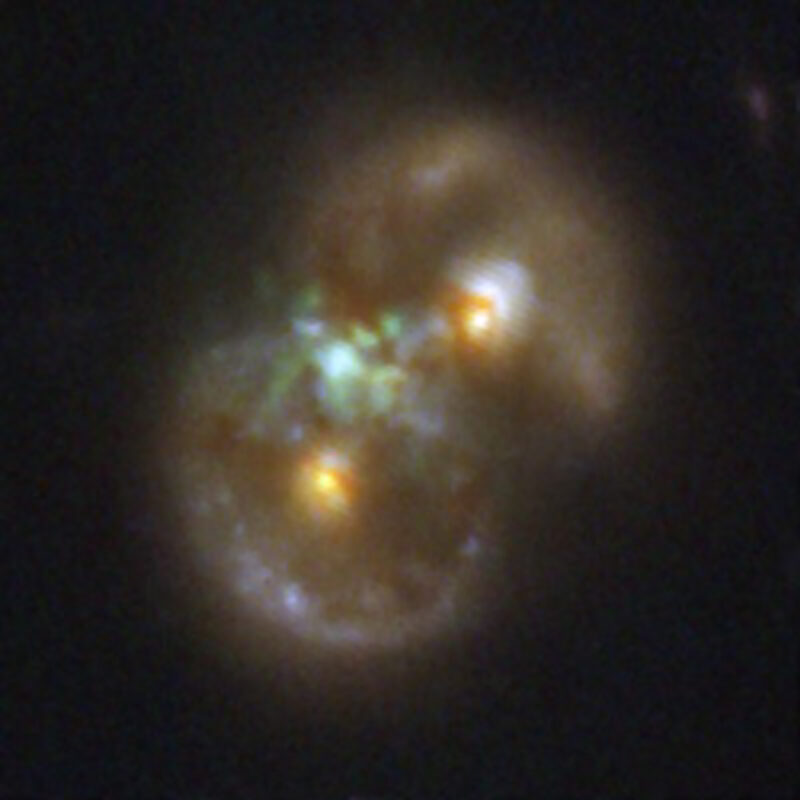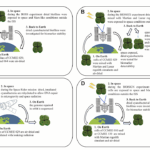Now Reading: Boeing Completes Key Thrust Structure for NASA’s Artemis Lunar Missions
-
01
Boeing Completes Key Thrust Structure for NASA’s Artemis Lunar Missions
Boeing Completes Key Thrust Structure for NASA’s Artemis Lunar Missions
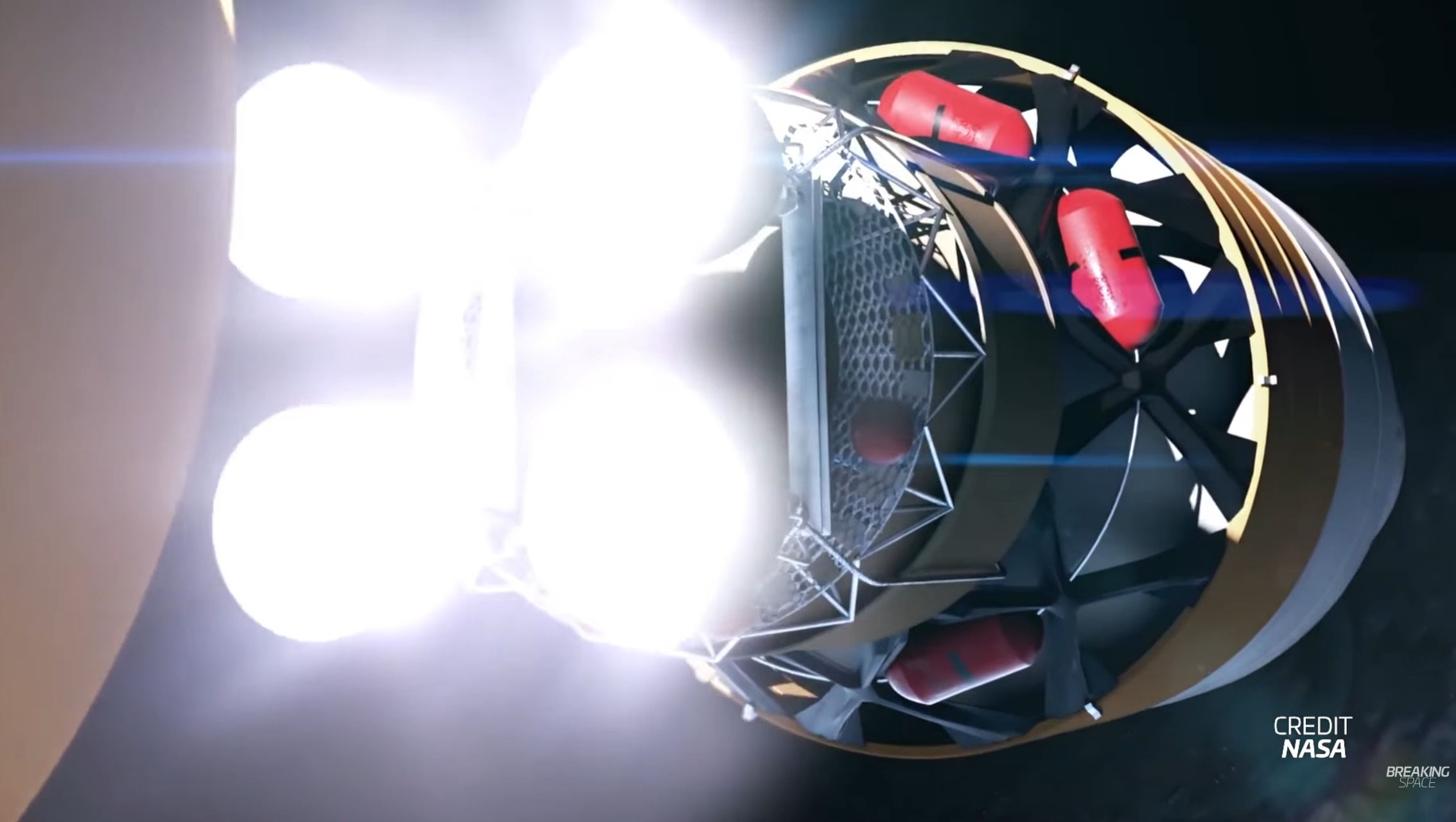

Boeing has made significant strides in the development of the Exploration Upper Stage (EUS), a pivotal component set to improve NASA’s Artemis program. The first thrust structure for the EUS has recently been completed, marking an important milestone in the journey toward providing the necessary thrust capabilities for future lunar missions. Unlike the Interim Cryogenic Propulsion Stage (ICPS), which has served its purpose during the initial Artemis missions, the EUS is engineered to support more ambitious goals, including sustained lunar operations and the construction of the Lunar Gateway.
The thrust structure functions as the backbone of the upper stage, with the primary role of connecting the four RL-10 engines to the rest of the rocket. This setup is a significant upgrade from the single RL-10 engine currently used by the ICPS. The new configuration not only increases the thrust capability but also allows for greater payload capacity, essential for the rigorous demands of future Artemis missions. The upgraded RL-10 engine, transitioning from the RL-10B-2 to the RL-10C-3, represents a leap in technology, designed to perform optimally in the high-stakes environment of space.
While the thrust structure showcased by Boeing was delivered through computer-generated imagery rather than physical photos, the completion signifies progress in the engineering and manufacturing processes at NASA’s Michoud Assembly Facility. This facility is set to play a vital role in the production of hardware for the EUS, as it’s currently being outfitted for EUS assembly, indicating a ramp-up in activity as the project moves forward.
It’s important to note that the thrust structure is not intended for flight; instead, it will serve as a structural test article. This testing phase is important to ensure that it meets NASA’s stringent requirements for load transfer and structural integrity, which ultimately safeguards the overall mission success. The focus on rigorous testing reflects Boeing’s commitment to quality and safety as they advance through the EUS development cycle.
Moreover, the news of the EUS thrust structure’s completion comes at an advantageous time, following the recent legislative passage of the “Big Beautiful Bill.” This appropriation has secured the financial stability of the SLS program through Artemis V, alleviating previous concerns regarding project funding and support. With this backing, Boeing’s development efforts could potentially accelerate, leading to the production of not only test articles but also the first flight-worthy thrust structures.
As work continues, the expectation is that Boeing will soon provide updates that include genuine images from the assembly floor at the Michoud facility. The anticipation surrounding these updates is palpable among space enthusiasts and industry watchers alike, as each tangible step forward represents another leap in humanity’s return to the lunar surface and the eventual exploration beyond.
The implications of the Exploration Upper Stage (EUS) for NASA’s Artemis program extend far beyond mere advancements in rocket technology; they encompass a visionary roadmap toward sustained human presence on the Moon and eventually, Mars. With the completion of the thrust structure, the Artemis program stands on the brink of a new era characterized by not only technical innovations but also a reinvigorated commitment to space exploration.
Firstly, the EUS’s enhanced thrust capabilities will allow for larger payloads, which is pivotal for missions that aim to establish a more permanent human presence on the Moon. The Lunar Gateway, a cornerstone project of the Artemis initiative, will serve as an orbiting lunar outpost, facilitating deeper space exploration. The successful deployment of the Gateway will hinge on the EUS’s ability to transport heavy components, such as habitats and science laboratories. This capability will unequivocally transform how missions are conceived and executed, allowing NASA to push boundaries further than ever before.
Moreover, the transition from the ICPS to the EUS is emblematic of a paradigm shift in how NASA approaches lunar missions. The ICPS, while reliable for initial missions, is constrained by its limited thrust and payload capacity, which renders it inadequate for the ambitious scope of Artemis IV and beyond. The EUS not only addresses these limitations but also embodies the lessons learned from earlier missions. For instance, the upgraded RL-10C-3 engine brings with it enhanced efficiency and thrust performance, ensuring that future missions can carry more sophisticated payloads essential for scientific research and technology demonstrations.
In the context of safety and reliability, the testing phase that the thrust structure will undergo is critical. NASA’s rigorous testing protocols are designed to scrutinize every element of the EUS, ensuring that it can withstand the extreme conditions of launch and operation. This emphasis on quality control stems from hard-earned lessons globally in aerospace engineering, where reliability is paramount. The adoption of advanced materials and engineering processes reflects a broader trend in space development, where failure is not an option.
The financial backing from the “Big Beautiful Bill” further solidifies the Artemis program’s trajectory. This renewed commitment from Congress underscores the importance of not just returning humans to the Moon, but ensuring a sustainable lunar exploration framework. The security of funding through Artemis V significantly alleviates uncertainties about project viability, allowing Boeing and its partners to focus on innovation rather than just survival amidst budgetary challenges.
It’s also worth noting the socio-political dimensions of the Artemis program. The success of the EUS and its subsequent missions has the potential to unite both public and private sectors in pursuit of common goals. As international partnerships and commercial collaborations expand, the global nature of space exploration becomes more pronounced. Nations and companies will have to work collectively to address the challenges of space travel, including resource management, technological sharing, and scientific collaboration. This collaborative spirit was exemplified during the Artemis I mission, where contributions from various international partners were crucial.
Ultimately, the EUS’s development and its implications signify an important leap not just in rocket science but in humanity’s journey into the cosmos. The forthcoming missions under Artemis will serve as a launching pad for deeper exploration, with the EUS acting as an indispensable conduit. The excitement about future missions is palpable, as the EUS will usher in a new epoch of lunar exploration, marked by international cooperation and human ingenuity.
Stay Informed With the Latest & Most Important News
Previous Post
Next Post
-
 012024 in Review: Highlights from NASA in Silicon Valley
012024 in Review: Highlights from NASA in Silicon Valley -
 02Panasonic Leica Summilux DG 15mm f/1.7 ASPH review
02Panasonic Leica Summilux DG 15mm f/1.7 ASPH review -
 03How New NASA, India Earth Satellite NISAR Will See Earth
03How New NASA, India Earth Satellite NISAR Will See Earth -
 04And Thus Begins A New Year For Life On Earth
04And Thus Begins A New Year For Life On Earth -
 05Astronomy Activation Ambassadors: A New Era
05Astronomy Activation Ambassadors: A New Era -
06SpaceX launch surge helps set new global launch record in 2024
-
 07Space Force plans new ‘Futures Command’ amid pressure to speed up modernization
07Space Force plans new ‘Futures Command’ amid pressure to speed up modernization













